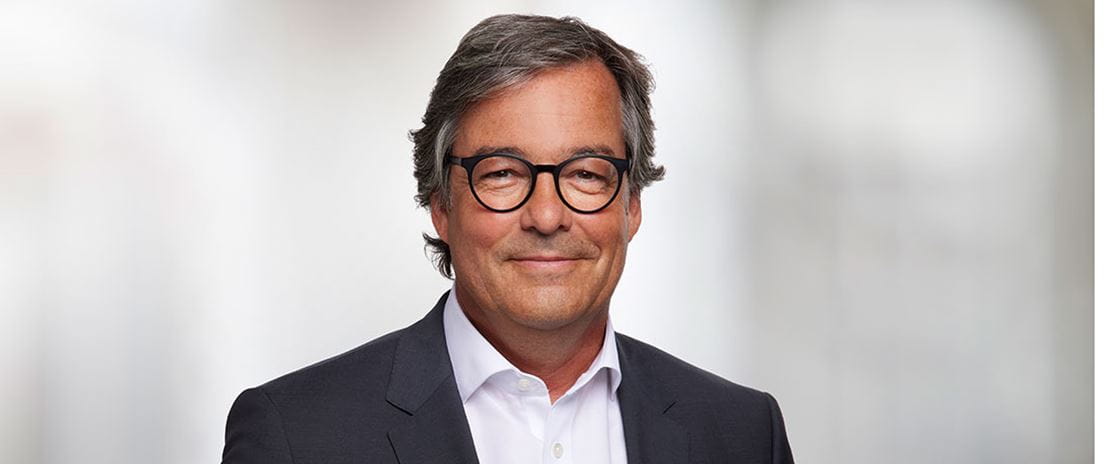News
Alternatives gaining traction in German structures
Date:
13. May 2024
- Alternative Investments

There is movement in the market for alternative investments. Luxembourg remains the leading choice for registering investment vehicles. However, more and more fund initiators and investors are opting for German structures such as Alternative Investment Funds (AIF) or Open-Ended Infrastructure AIFs (OIS).
Luxembourg has long been a favoured location for investment structures in alternative investments. Thanks to many years of experience, service providers in the Grand Duchy have developed a deeper understanding of this asset class than those elsewhere.
The German market, however, now also offers some compelling options.
“Today, the differences between these two locations are only nuanced, and they are nearly equivalent”, says Markus Bannwart, Head of Capital Markets & Fund Structuring at Universal Investment.
This is increasingly recognised by institutional investors in Switzerland, Germany, and Austria. When launching new alternative vehicles, this group of clients is increasingly opting for German structures. In 2022, BaFin reported gross capital inflows into AIFs of €310.3 billion, up from €275.9 billion the previous year.
 Markus Bannwart, Head of Capital Markets & Fund Structuring, Universal Investment
Markus Bannwart, Head of Capital Markets & Fund Structuring, Universal Investment "We are seeing a strong trend towards German structures both in terms of setup and also in inquiries about alternatives," explains Bannwart. Many clients initially inquire about the Luxembourg location with the structuring expert but switch to a German structure once they learn about the possibilities. "Previously, Luxembourg was always the default choice, but today, German-speaking investors prefer Germany when a project can be implemented here," Bannwart notes.
However, little change is expected among international investors. For investors from the Anglo-Saxon region or other European countries, Limited Partnership structures are the market standard for alternative investments, with Luxembourg or Ireland being the preferred locations.
Institutional investors were deterred by uncertainties.
Structures for alternatives under the German Capital Investment Code (KAGB) have been around for some time. Investors can launch alternative investment funds according to Section 284 KAGB as AIFs with fixed investment conditions or as AIFs without fixed investment conditions, either in an open (Section 282) or closed (Section 285) form. The latter structures are particularly versatile because they have no investment restrictions or participation limits.
Additionally, under Section 285, there are no diversification requirements, allowing for single-asset funds, and the investment can be flexibly structured, possibly even as a security. It is also worth noting that these funds cover the entire spectrum of alternative investments and can therefore be structured as loan funds on the debt side. On the equity side, nearly all types of target funds are feasible, from hedge funds and private equity vehicles to funds for infrastructure or renewable energy.
“As versatile as these structures are, they were fraught with uncertainties in practice and therefore not favoured when choosing a fund structure”, explains Markus Bannwart.
German investment vehicles are now gaining momentum, in part because previous disadvantages, such as tax issues, have been addressed.
"Unlike in Luxembourg, fund services associated with Section 282 in Germany were subject to VAT", Markus Bannwart explains. "This applied both to the custodian and the AIFM, so German funds were already at a disadvantage compared to Luxembourg vehicles at the outset."
Since the beginning of 2024, there is now legal certainty that this tax disadvantage has been removed.
Investors were worried about potential consolidation requirements when investing in AIFs under Section 282 of the German Capital Investment Code (KAGB). However, sceptical investors can breathe a sigh of relief: a potential consolidation obligation can be addressed with a double-deck structure. This involves using an AIF under Section 284, which invests in a fund under Section 282. Markus Bannwart notes that this particular concern does not apply to AIFs under Section 285, which are structured differently.
Advantages of German structures are compelling
As a result of legislative changes, the advantages of German investment structures are becoming more prominent. Investors regulated under German law, such as provident funds, pension funds, or pension schemes, can also structure an AIF under Section 282 KAGB in a way that meets the requirements of the German Investment Regulation (AnlV) or the German Regulation on the Supervision of Pension Funds (PFAV).
Shorter setup times also favour German vehicles.
“This does not require an investment company, whereas Luxembourg structures often necessitate the co-founding of an investment company,” explains Markus Bannwart.
Additionally, German vehicles eliminate the need for approval processes, such as those required for the Luxembourg legal form of the specialised investment fund (SIF).
New options for retail products
In the past, retail investors had very limited opportunities to invest in alternative investments using German vehicles. This has also now changed. Since the KAGB amendment in the summer of 2021, Open-Ended Infrastructure AIFs (OIS) under Section 260a KAGB can now be offered as open retail funds in Germany.
The legal form of the German AIFs facilitates broad access to retail investors through suitable distribution platforms. Universal Investment was among the first to launch such a product as an AIFM for the open public fund 'KGAL klimaSUBSTANZ'.
With this fund, private investors can acquire a direct stake in a broadly diversified portfolio within the promising renewable energy sector, starting from an investment amount of 25 euros. “Previously, such a product would have been launched in Luxembourg – however, with distribution restrictions as a Part-II fund, which could only be approved for distribution in other European countries under stringent conditions”, Bannwart explains.
Alongside the OIS, the “European Long Term Investment Fund” (ELTIF) also appeals to retail investors. Introduced in 2015, the ELTIF regime supplements national fund regulations without establishing its own vehicles. Initially, ELTIFs were relatively unknown, but this is expected to change with the implementation of the ELTIF 2.0 Regulation in 2024, which increases investment flexibility and also bridges to traditional retail investor funds.
“The ELTIF has now been implemented by the national regulators”, notes Markus Bannwart.
The first draft of the technical regulatory standards (RTS) was released in January 2024, followed by statements from BaFin on how ELTIFs can be structured in Germany.
“Since the product rules of the ELTIF supersede the special provisions of the KAGB, there are interesting prospects for structuring, such as varying holding periods, redemption options, and investment strategies”, Bannwart notes.
How this will be received by the market remains to be seen. The main locations for ELTIFs remain Luxembourg, along with France, Italy and Spain. However, the prospect of designing ELTIFs as German investment assets is appealing for retail investors.
Universal Investment is working on an ELTIF project. “Initially, our focus will be on meeting any Luxembourg-specific requirements, but we are also keenly observing the evolving opportunities in Germany”, Bannwart says.
Another benefit of the ELTIF is its cross-border distribution within the EU.
We are a sparring partner for institutional investors and fund initiators.
Alternatives continue to be a compelling asset class. Compared to interest-based products, equity investments are less influenced by current market trends, making them highly valued by investors who focus on long-term strategies.
For retail investors, both OIS and ELTIF, along with AIFs under Sections 282 and 285 of the KAGB for institutional investors, will further strengthen the trend towards German structures in the upcoming years.
Universal Investment acts as a strategic partner for institutional investors and fund initiators, delivering tailored product ideas that meet their specific needs through collaboration with clients and – if desired – their advisors. In addition to structuring, Universal Investment handles the entire project management for fund launches at the client's request. The comprehensive service range thus provides a “complete care package”, from product conception and launch to portfolio administration.
For institutional investors with established in-house portfolios of alternative investments, Universal Investment is an essential contact, as administering alternative investments is highly complex. As a skilled and experienced partner, Universal Investment oversees portfolio management, enabling clients to concentrate on strategic investment decisions.
“We are always up-to-date on regulations and possess the technical expertise for innovative solutions,” Markus Bannwart concludes. “We understand our clients' needs and thus serve as a reliable provider for all aspects related to structuring, launching, and administering alternative investments”.
